#Chinese dinosaur fossil
Explore tagged Tumblr posts
Photo

RARE Keichousaurus hui Fossil, Triassic Reptile, Guanling Formation, China | Genuine Specimen + COA
RARE Keichousaurus hui Fossil from the Guanling Formation, Triassic Period – Guizhou Province, China
This extraordinary fossil features the complete or near-complete remains of Keichousaurus hui, a marine reptile that lived approximately 240 million years ago during the Middle Triassic epoch. Unearthed from the world-famous Guanling Formation in Guizhou Province, China, this specimen is a rare and scientifically significant piece, perfect for fossil collectors, natural history enthusiasts, and educational displays.
Fossil Type & Species:
Type: Vertebrate Fossil (Reptile)
Species: Keichousaurus hui
Order: Sauropterygia
Superfamily: Pachypleurosauroidea
Family: Keichousauridae
Identified by: Originally described by Chinese palaeontologist Yang Zhongjian (Chung-Chien Young) in 1958
Geological Details:
Formation: Guanling Formation
Period: Triassic (Anisian Stage, Middle Triassic – approx. 247 to 237 million years ago)
Zone/Biozone: Not formally assigned to a specific biozone but typical of the fossil-rich marine strata of the Anisian
Depositional Environment: Shallow marine lagoon or shelf setting with fine-grained sedimentation, ideal for exceptional fossil preservation
Morphology & Features:
Keichousaurus hui is a small marine reptile resembling a lizard in body shape. It is characterized by:
A long, slender neck with approximately 25 cervical vertebrae
Four well-developed flipper-like limbs adapted for swimming
A long tail used for propulsion
Clearly defined ribs and vertebral column
In some specimens, you can observe fine details such as skull structure and even gastralia (belly ribs)
This particular specimen exhibits excellent articulation and preservation, with visible limb bones, vertebrae, and overall body outline.
Specimen Details:
Origin: Guanling Formation, Guizhou Province, China
Species: Keichousaurus hui
Age: Middle Triassic (Anisian Stage)
Matrix: Fine-grained limestone slab
Fossil Type: Full or near-complete articulated skeleton
Size Reference: Scale rule square = 1cm (please see photo for full sizing)
Note: You will receive the exact fossil specimen shown in the photographs
Authenticity & Quality:
We carefully select all our fossils based on scientific relevance, aesthetic quality, and authenticity. This specimen is 100% genuine and comes with a Certificate of Authenticity. The photo shows the actual fossil you will receive, not a stock image.
Why Choose This Fossil?
This Keichousaurus hui fossil is a standout example of Triassic marine reptile life, making it an ideal piece for:
Palaeontological study
Educational collections
Museum-quality display
Gifts for fossil enthusiasts or students
Shipping & Packaging:
We use eco-conscious, secure packaging to ensure your fossil arrives safely and in excellent condition. Fast and careful dispatch provided.
Add a genuine piece of prehistoric marine life to your collection with this stunning Keichousaurus hui fossil.
All of our Fossils are 100% Genuine Specimens & come with a Certificate of Authenticity.
#Keichousaurus hui fossil#Triassic reptile fossil#Guanling Formation#Guizhou Province fossil#Chinese dinosaur fossil#rare reptile fossil#authentic Keichousaurus#Triassic marine reptile#lizard-like fossil#genuine fossil specimen#fossil with COA#prehistoric reptile fossil#collector fossil#palaeontology specimen#fossil reptile plate
0 notes
Text
🐉 Long before the development of paleontology as we know it, people unearthed fossilized bones and believed they had found the remains of dragons from an earlier age.
🐉 Happy Year of the Dragon! What animal are you? Emojis only.
#amnh#museum#fossil#dinosaur#natural history#science#paleontology#nature#animals#year of the dragon#lunar new year#chinese new year#did you know#fact of the day#dragons
509 notes
·
View notes
Text







#Hongkong#dinosaurs#dinosaur fossils#Port Island#cretaceous period#UNESCO Global Geopark#Heritage Discovery Centre#paleontology#Chinese Academy of Sciences#fossils#Institute of Vertebrate Paleontology and Paleoanthropology#Gandititan cavocaudatus #landmark discovery#skeletons#palaeoecology#dinosaur species
18 notes
·
View notes
Text
One of the most beautiful sights in the summer twilight is the gentle glow of fireflies lighting up the crepuscular gloom. These twinkling insects are the most abundant bioluminescent beetles, with roughly 2,500 species known around the world. Their glowing abdomens serve multiple purposes – but what we don't really have a good handle on is how this trait evolved. According to a team led by paleontologist Chenyang Cai of the Chinese Academy of Sciences, a firefly magnificently preserved for eons in golden amber may have some answers. Some 99 million years ago, Flammarionella hehaikuni was already lighting up the dusk, suggesting its ancestors had well-and-truly evolved their characteristic glowing butt by the Mesozoic.
Continue Reading.
881 notes
·
View notes
Text

Coming right around the Chinese New Year, top to bottom, are two highly scientifically-important dinosaurs hailing from the Aptian-aged (125-118 mya) Jiufotang Formation of China’s Liaoning Province:
Microraptor zhaoianus ranks alongside the late Jurassic Archaeopteryx and the closely-related Sinornithosaurus as one of the first theropod dinosaurs ever to have discovered with full feather and wing impressions. It measured about 80 cm (2.6ft) in length, had a wingspan of 99 cm (3.25 ft) and weighed about 1.25-1.88 kg, sported a uniquely black but iridescent plumage, and is the namesake of the Microraptoridae, a family of raven-sized dromaeosaurs that dominated the Jehol Biota of the Jiufotang and Yixian Formations and are particularly famous for sporting long flight feathers on both their legs and limbs. This “four-winged” configuration, which surprisingly resembles the hypothetical ��Tetrapteryx” stage of bird evolution proposed by naturalist William Beebe in 1915, enabled Microraptor and its kin to glide from tree to tree in pursuit of small birds, lizards and mammals as well as achieving some sort of powered flight over short distances.
Psittacosaurus is a basal ceratopsian that is closer in phylogeny to creatures like Styracosaurus and Triceratops than to the more primitive Yinlong from the late Jurassic, and is one of the most well-preserved and best-studied genera of all non-avian dinosaurs. It reached the size of a pig or a retriever dog and lived throughout much of continental Eastern Asia 125-105 million years ago, and is known for having the most species described of any non-avian dinosaur, with 12 different species ranging from as far north as Siberia to as far south as Thailand. Two of these species were both found in the Jiufotang Formation - P.melieyingensis and P.mongoliensis, the type species which measured up to 2 meters (6.2 ft) long and weighed about 80 kg (44 lb). Psittacosaurus had highly-developed senses of smell and vision, a pair of protruding jugal (cheek) bones that were possibly used for display, and was active for short periods at day or night. Psittacosaurus also possessed self-sharpening teeth that were used for cropping and slicing tough plants, and unlike future ceratopsians, it lacked teeth for chewing and grinding food and thus used gastroliths (which would have been stored in a gizzard similar to those of modern birds) to wear down the leaves and bark that it ate as it passed through the digestive system. Psittacosaurus is also unique among ceratopsians for having a large, well-proportioned brain. This indicates that the dinosaur was capable of doing a wide range of complex social behaviors such as bird-like sleeping, nest-building and parental care. This is perhaps true with possible instances of overburdened Psittacosaurus parents brining in a nanny or another guardian to take care of large nests of more than a dozen hatchlings, as evidenced of fossils of adolescent females preserved with several hatchlings together. The Psittacosaurus of the Jiufotang Formation shared their temperate forest habitat with the basal ankylosaur Chuanqilong, several genera and species of paravians and pterosaurs, a large titanosaur, and the 10-meter-long Yutyrannus relative Sinotyrannus, and Psittacosaur hatchlings and occasionally adults were also preyed upon by the large, badger-like mammal Repenomamus. One fossil Psittacosaurus specimen that is on display at a German museum (SMF R 4970) preserves the scales, colors and integument that the living animal would have had, and they indicate that the particular Psittacosaurus had a counter-shaded reddish brown and beige pattern that was blurrier and less-defined compared to the striking orange-and-white colors of Sinosauropteryx (which was suited for a lifestyle of foraging in open areas) and was therefore useful for camouflaging the Psittacosaurus in the woods. The specimen also possessed a strange crest of yellow, keratinized, bristle-like structures protruding from the base of its tail that were quite similar to the thin, filamentous structures found on the heterodontosaurid Tianyulong, which also possibly indicates that feather-like structures or proto-feathers may have appeared early in the evolutionary history of the dinosaurs and were soon lost in the evolution of some dinosaur groups or retained in some form in the evolution of others.
#microraptor#psittacosaurus#paleoart#dinosaur#dinosaurs#paleontology#paleontology art#paleoblr#paleoartists on tumblr#dromaeosaurid#ceratopsians#ceratopsian#dromaeosaur#dinosaur art#dinosaur artwork#cretaceous#early cretaceous#aptian#albian#dinoblr#palaeontology#palaeoart#paleontography
320 notes
·
View notes
Text
《Keep On》 - but with the Terrans!
This is a recreation of Digimon Adventure's ending scene with Earthspark characters :)
As a cross-fandom fan I've wanted to do this for a good while and eventually started working on the project in December, 2024. While it's not perfect and a lot of pieces are still missing, I decided that it's good enough for now and it's time to just post it. Also, this is actually for an International Children's Day (June 1) Chinese fandom event.
Details under the cut
OG Video
youtube
Tools I used
Art: Procreate
Animation: Figma (most of the complicated ones), Python (for creating gifs of simple animations), DaVinci Resolve (for putting the whole video together)
Components of the video
00:00 - 00:36
The first sequence is just the main character's silly faces, which is the most fun part to draw! And they already look adorable even without the rest of the video or any music.







I also need to create the flipping effects, which I initially attempted to do with Figma but realized that flipping 8 images at once overloads the tool and makes its animation laggy. I need them to all flip in sync, so this part is actually done with a Python script.

Compared to the OG video, the middle row is missing. I initially planned to draw the human Maltos but unfortunately ran out of time.
00:36 - 00:51
The second sequence provides an overview of 1) locations in the show, 2) side characters of the show, 3) iconic items that belong to the main characters.
For the locations, I took screenshots and edited them into having anime vibes:

Also had to distort the side characters' images so they follow a tilted route. The distortion part is also done with a Python script.
I initially planned to draw the following items for the Terrans but ran out of time:
Swords and housework star stickers for Twitch
Shield and balls for Thrash
Inventions (smart trainer / hologram projector) for Nightshade
Tablet and the director's viewfinder for Hashtag
Dinobot comics & dinosaur fossils for Jawbreaker
Contaminated energon cans for Aftermath
Cyber Slayer for Spitfire
Yeah the items for the Chaos Terrns are pretty cursed lmao, but I honestly can't think of anything else that are iconically theirs.
00:51 - 1:17 Roll out!
In the OG video this part is the main characters rolling out with their Digimon partners. For the Terrans, of course they will be rolling out with their mentor-ish counterparts. (I'm so sorry that Bumblebee wasn't included. You are the best mentor. But like, you are the shared mentor so it's kind hard to point to one Terran and declare you their specific mentor.)

At this point you probably already realized that the only characters that I do not run out of time for are the Terrans. And yeh, once again I run out of time for the Mentors and had to use low resolution stock images, screenshots, and even very inaccurate toy images.
I struggled to decide whether Starscream should stand by Hashtag or Spitfire, but Spitfire really doesn't have anyone besides Starscream so it had to be this way, which is again pretty cursed.
1:17 - 1:31
Turns out I do run out of time even for the Terrans! I was initially planning to draw the "everyone running towards the silver lining" scene but kinda suck at drawing animation. So have some Terrans dancing.
1:31 - 1:42
Hesitated between drawing "Terratronus getting armored up, each armor piece representing one Terrans" - which would be a perfect way to represent the ending of S3! But it'll probably look weird with a horizontal frame so I eventually just drew a traditional family photo.

#transformers#earthspark#transformers earthspark#twitch malto#thrash malto#nightshade malto#hashtag malto#jawbreaker malto#aftermath#spitfire#es aftermath#es spitfire#chaos terran aftermath#chaos terran spitfire#I actually want to make a version with my Chaos Terrans as well!!#maybe next time :3#my art#my video#my animation#digimon homage#digimon keep on#Youtube
72 notes
·
View notes
Text

[ Fujianvenator prodigiosus, illustrated by Mr. Chuang Zhao. ]
"One hundred and fifty million years ago, a young, bantam-sized, bird-like dinosaur became mired in a swamp in what is now southeastern China, and succumbed. Its fossilized remains, unearthed in 2022 and named Fujianvenator prodigiosus, show it to be one of the earliest bird-like dinosaurs to date from the Jurassic period. The researchers describe their discovery in a paper published today in Nature. “This is really a weird animal within the group of birds,” says Mark Loewen, a palaeontologist at the University of Utah in Salt Lake City, who was not involved in the discovery. The creature had oddly lanky legs and might have lacked the ability to fly. It also doesn't seem to conform to the accepted bird-evolution story. Although dinosaurs were largely extinct by 66 million years ago, therapods, the three-clawed, hollow-boned group that included Velociraptor and Tyrannosaurus rex, had started to evolve into today’s birds. Many palaeontologists consider the first bird to be a 150-million-year-old feathered dinosaur called Archaeopteryx, fossils of which were found in Germany. But this study adds to mounting evidence that by the time of Archaeopteryx, dinosaurs had already diversified into different kinds of birds, Loewen says. Hailu You, a palaeontologist at the Chinese Academy of Sciences in Beijing and one of the co-authors of the paper, says that in the Jurassic, bird-like dinosaurs might have been occupying different ecological niches. “Early bird evolution is complicated,” he says. Fujianvenator’s fossil lacks a head or a complete tail, but its body and limbs show a medley of traits similar to those of other bird-like dinosaurs, such as the relative lengths of the fingers, and details of the pelvis and vertebrae. But it didn’t have many modifications that would contribute to flight."
Read more: "‘Weird’ dinosaur prompts rethink of bird evolution" by Jude Coleman.
#palaeoblr#Palaeontology#Paleontology#Fujianvenator#Dinosaur#Fujianvenator prodigiosus#Evolution#Cretaceous#Mesozoic#Prehistoric#Extinct#Theropod#Art#Article#Information
180 notes
·
View notes
Text

Sinraptor is a genus of theropod dinosaur that lived during the Late Jurassic period, approximately 160 million years ago. Its name combines the Latin prefix "Sino," meaning Chinese, and "raptor," meaning robber, reflecting its discovery in China. Despite its name, Sinraptor is not closely related to dromaeosaurids like Velociraptor but is instead classified as a metriacanthosaurid carnosaur, distantly related to Allosaurus. The genus includes two species: Sinraptor dongi, the type species, and Sinraptor hepingensis, though the latter's classification remains debated among paleontologists.
The holotype specimen of Sinraptor dongi was unearthed in 1987 during a joint Chinese-Canadian expedition to the Shishugou Formation in northwestern China. Standing nearly 3 meters tall and measuring roughly 7.6 meters in length, Sinraptor was a formidable predator. Its blade-like teeth suggest it preyed on medium-sized dinosaurs, such as stegosaurs, inflicting massive wounds. The discovery of Sinraptor has provided valuable insights into the early radiation of carnosaurs during the Jurassic period.
Sinraptor's fossils also exhibit evidence of paleopathology, including tooth marks and punctures, indicating interactions with other predators or prey. Its close relatives, such as Yangchuanosaurus, share similar features, and together they are classified within the family Metriacanthosauridae. Sinraptor remains one of the best-known members of this family, contributing to our understanding of dinosaur diversity and evolution during the Jurassic era.
#art#drawing#illustration#sketch#artwork#artist#prehistoric#extinct#paleoart#paleofauna#paleontology#dino#dinosaur#dinosaurs#theropod#sinraptor
11 notes
·
View notes
Photo

New Species of Jurassic Herbivorous Dinosaur Discovered in China
A new genus and species of eusauropod dinosaur has been identified from a fossilized partial skeleton with a nearly complete skull found in the Chinese province of Gansu.
https://www.sci.news/paleontology/jinchuanloong-niedu-13939.html
#eartharchives#paleomedia#paleontology#fossil#fossils#evolution#evolutionarybiology#naturalhistory#magazine
8 notes
·
View notes
Note
there was Chinese interest in the Out Of Asia theory, in both the Republic, Chiang Republic and People’s Republic periods before the Out Of Africa theory became commonly accepted. Was the 1954 Yeti expedition done just from the Nepalese-Indian side or were the American agents and “anthropologists” given access on the Sino-Tibetan side of the Himalayan border?
During the early part of this century, it was absolutely believed for a long time that the deserts of Western China were the most likely place of human origins, as seen in this migration map from 1944, made from the best available knowledge of the time:

Remember, the oldest fossil remains at this point were in China, where Homo erectus was discovered (originally known by his initial place of discovery in Chungkotien Cave, nicknamed "Peking Man"). The discovery of Australopithecus and Homo habilis in Olduvai Gorge and South Africa, which place human origins in Africa, were not until the 50s and 60s, so it seemed entirely reasonable that Homo sapiens evolved in Western China.

The idea that China's desert regions were the origin of modern humans and culture is seen a lot in pop culture from 1900-1950, mainly because there were tremendous explorations in the region, especially Aurel Stein's expedition of 1908, who ventured into the Taklamakan Desert to find the Dunhuang Caves and Khara-Khoto, a city destroyed completely by Genghis Khan and vanished in the desert.

If you've ever heard of Roy Chapman Andrews and his famous expeditions in the 1920s, it's worth noting that he ventured into the Gobi Desert looking for human remains....not dinosaurs, and the discovery of dinosaur eggs was an unexpected surprise.


For that reason, there was a short lived Silk Road Mania that seemed to be a smaller scale predecessor to the pop culture dominating Egyptomania of the 1920s. It's bizarre to read adventure and fantasy fiction of the 1910s-1920s that features mentions of Silk Road peoples like the Kyrgyz, Sogdians, Tajik, Uigurians, and Tuvans. The best example I can think of would be the Khlit the Kossack stories of Harold Lamb (who also wrote a biography of Tamerlane), which together with Tarzan and Tros of Samothrace, formed the core inspiration for Robert E. Howard's Conan the Barbarian.
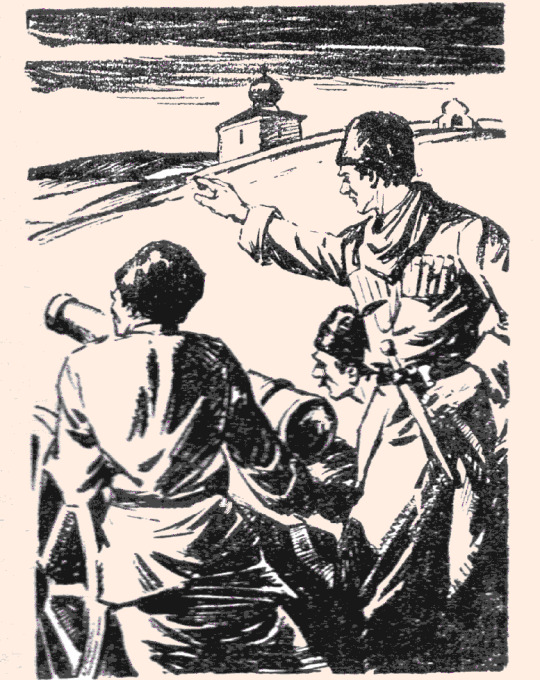
The most interesting example of this would be A. Merritt's Dwellers in the Mirage, which featured a lost city in Xinjiang that was the home of the Nordic race, who worshipped their original religion, the kraken-like squid devil god Khalkru. It was widely believed in this era that Nordics emerged from Central Asia originally, and while it's easy to write this off as turn of the century racialist claptrap pseudohistory (along with Hyperborea legends), in this case, it is actually true: a branch of the Indo-European family lived in West China, and 5,000 year old redheaded mummies have been found in the region. As usual, A. Merritt was right on the money with his archeology, more so than other 1920s authors. After all, his "Moon Pool" was set around the just discovered ruins of Nan Madol, the Venice of Micronesia.
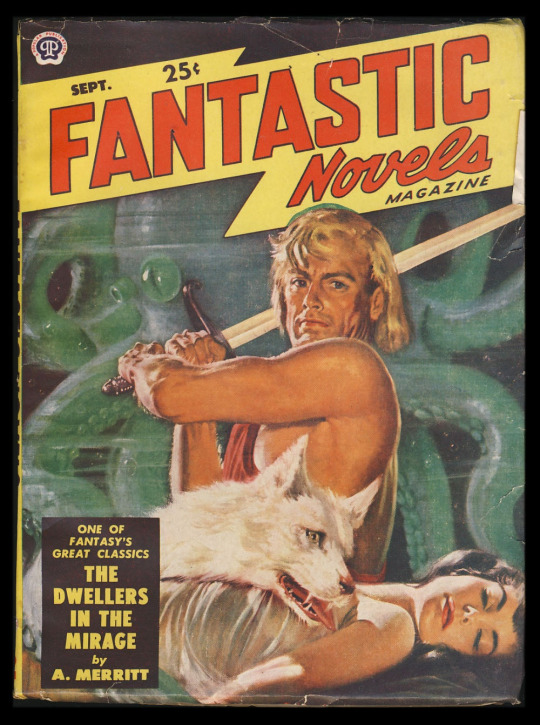
Jack Williamson's still chilling Darker Than You Think in 1948 was also set in the Silk Road/Central Asian region, as the place the race of shapeshifters emerged from, Homo magi, who await the coming of their evil messiah, the Night King, who will give them power over the human race.
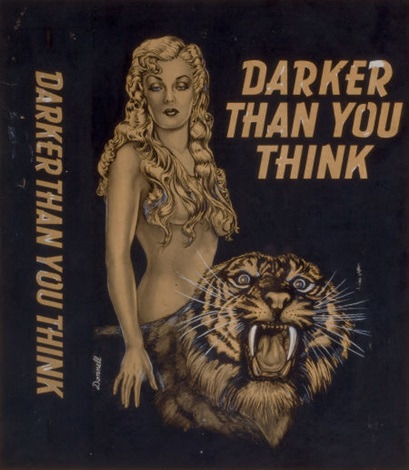
H. Rider Haggard set "Ayesha: the Return of She" (1905) in Xinjiang, among a lost Greek colony in Central Asia (no doubt based on Alexandria on the Indus, a Greek colony in modern Pakistan that was the furthest bastion of Greek Culture). This was also two years after the Younghusband Thibetan Expedition of 1903, where the British invaded Tibet. At the time, the Qing Dynasty was completely declining and lost control of the frontier regions, and the power vacuum was filled by religious authority by default (this is something you also saw in Xinjiang, where for example, the leader of the city was the Imam of Kashgar).
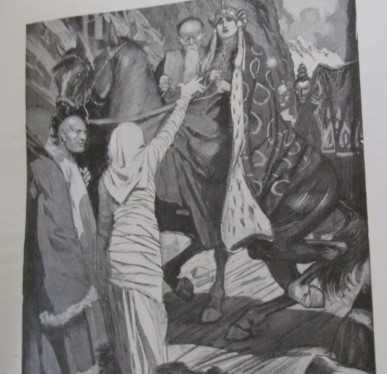
This is one of the many British invasions they have attempted to cram down the memory hole, but if you ever see a Himalayan art piece that was "obtained in 1903-1904" ....well, you know where it came from.
Incidentally, there's one really funny recent conspiracy theory about paleontology, fossils, and China that I find incredibly interesting: the idea that dinosaurs having feathers is a lie and a sinister plot spread by the Communist Chinese (who else?) to make American youth into sissy fancylads, like Jessie "the Body" Ventura. How? By lying to us and making up that the manly and vigorous Tyrannosaurus, a beast with off the charts heterosexuality and a model for boys everywhere, might have been feathered like a debutante's dress. What next - lipstick on a Great White Shark? The long term goal is to make Americans effeminate C. Nelson Reilly types unable to defend against invasion. This is a theory that is getting steam among the kind of people who used to read Soldier of Fortune magazine, and among abusive stepfathers the world over.

...okay, are you done laughing? Yeah, this is obvious crackpottery and transparent sexual pathology, on the level of the John Birch Society in the 60s saying the Beatles were a Communist mind control plot. Mostly because animals just look how they look, and if it turned out that the ferocious Tyrannosaurus had feathers and looked like a fancylad Jessie Ventura to you, well, that's your problem and mental baggage, really.
I was left scratching my head over this one. But there is (kind of) something to this, and that is that a huge chunk of recent dinosaur discoveries have been in China. I don't think it has anything to do with a Communist plot to turn American boys into fancylads, but more to do with a major push in internal public investment in sciences in that country, and an explosion of Chinese dinosaur discoveries. If you want to see a great undervisited dinosaur museum, go to the Zigong Dinosaur Museum in Sichuan.

Pop quiz: what living scientist has named more dinosaur discoveries? It's not Bakker or Horner. The greatest living paleontologist, Xu Xing, which is why a lot of recently found dinosaurs are named things like Shangtungasaurus.
259 notes
·
View notes
Text
I had a good day :)
I went with my wife to the natural history museum, on the notion that it should be pretty quiet today, and it was. We spent the time walking around, learning about the world (the real world! that actually exists!), saw some dinosaur bones, some really cool preserved moths and butterflies, briefly befriended another group of visibly queer folks who complimented me on my trans pride pin, and I got to look at a really cool old Chinese calligraphy set. And then we picked up food and went home and watched old episodes of Mythbusters :)
I don't know how to describe this without sounding really cheesy, but okay, so I grew up believing in evolution, alright? My community was not all anti-science (...only anti-psychiatry. and anti-reproductive healthcare. and anti-trans.) But still, I grew up believing that evolution was just the mechanism for God's own guiding hand. So the bone-deep grounding feeling of being in the middle of a bunch of models and fossils of pre-historic life, and realizing the depth of time that led to life like me, the pure scale of repetition of random chance, the understanding that the coniferous trees and the lizardlike animals of the Permian period were just as much alive, and in exactly the same way as me (my preference for my own mode of life simply a matter of perspective). Floored me. In the best possible way.
8 notes
·
View notes
Photo

RARE Yphalosaurus lingyuanensis Fossil – Lower Cretaceous Dinosaur Reptile, Liaoning China
A remarkably rare and scientifically significant fossil of Yphalosaurus lingyuanensis, a unique dinosauriform reptile from the Lower Cretaceous strata of Liaoning Province, China. This carefully prepared and preserved fossil represents an exceptional example of the Jehol Biota, one of the most important fossil Lagerstätten in the world.
Yphalosaurus lingyuanensis is a rare genus of Early Cretaceous reptile characterised by its elongated limbs, vertebral structure, and possible basal association with early ornithischians or ornithopods. Its fossils have been described from the Yixian or Jiufotang Formations, famed for their fine-grained volcanic sediments and exceptional fossil preservation.
Fossil Type: Dinosauriform Reptile Fossil
Species: Yphalosaurus lingyuanensis
Geological Age: Lower Cretaceous – Aptian Stage (~120 million years ago)
Formation: Yixian or Jiufotang Formation, Liaoning Province, China
Depositional Environment: These fossils were preserved in lacustrine (lake) environments with interbedded volcanic ash layers. Rapid burial in fine sediment under low-oxygen conditions enabled the preservation of intricate skeletal details and associated soft tissues in many species.
Morphological Features:
Partial to near-complete skeletal structure
Elongated hind limbs and vertebrae
Subtle cranial and dental features typical of basal ornithischians
Notable:
Exceptionally rare vertebrate fossil from China’s Jehol Biota
Important for understanding early dinosauriform evolution
The photo shows the exact specimen you will receive
Authenticity: All of our fossils are 100% genuine natural specimens and include a Certificate of Authenticity. Please refer to the scale cube in the image for precise sizing (1cm squares).
This rare Yphalosaurus lingyuanensis fossil from Liaoning is a highly collectible and scientifically important vertebrate specimen, ideal for advanced collectors, educators, and palaeontology enthusiasts.
#Yphalosaurus lingyuanensis#Liaoning fossil#Lower Cretaceous dinosaur#Chinese dinosaur fossil#rare reptile fossil#Jehol Biota fossil#fossil lizard dinosaur#fossil Yphalosaurus#Liaoning Cretaceous formation#authentic dinosaur fossil#collector fossil China#vertebrate fossil
0 notes
Text
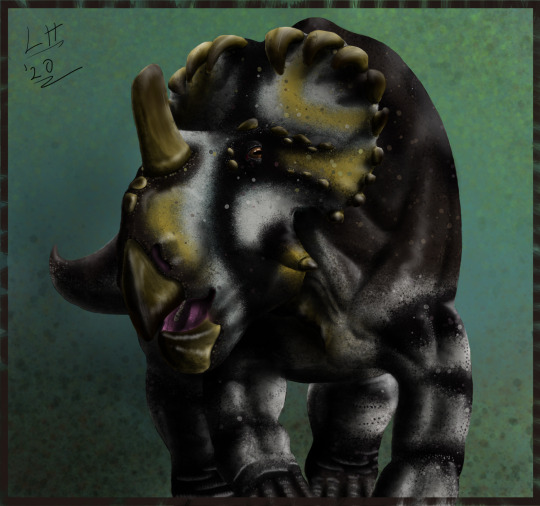
A slightly different take on Wendiceratops
This piece is the result of having too much time to sit and think during lockdown 2020. Wendiceratops is a centrosaurine from the lowermost section of the Oldman Formation on the Canadian side of the Montana/Alberta border. It's not one that gets brought up or mentioned a whole lot, but the few bits of art you see of it always show it with large brow horns, even Danielle Dufault's beautiful rendition in the original species description shows it with large brow horns. This is totally reasonable for a basal centrosaurine (i.e. a non-Eucentrosaur). But, there's an issue. In phylogenetic analyses Wendiceratops consistently groups as the sister taxon to Sinoceratops. The known fossils of Sinoceratops, while incompletely preserved, definitively show that it had no brow horns, only a couple tiny bumps. Furthermore, within the description of Wendiceratops the authors note that "Unfortunately, most of the braincase (...) and the postorbital have not been recovered." (Evans & Ryan 2015 pg. 9). Therefore, given the lack of postorbital material and the sister relation to Sinoceratops it would be most parsimonious to reconstruct Wendiceratops without brow horns. So that's what I did!
As for how well I executed that idea, well... It's not my best. I was still rather new to digital art at the time, and this was one of the first I had done that wasn't simply tracing over a photo of the bones and adding a little soft tissue. I had to wrangle with perspectives and angles that were unfamiliar, and I even tried to create a scaly effect with one of the 'dot splatter' tools. It turned out much darker, muddier, and less defined than I wanted, and I apparently didn't have a great grasp on how the forearm and chest muscles attached. A neat hypothesis but not so great execution.
References:
Wendiceratops description:
Evans, D. C. & Ryan, M. J. (2015) Cranial Anatomy of Wendiceratops pinhornensis gen. et sp. nov., a Centrosaurine Ceratopsid (Dinosauria: Ornithischia) from the Oldman Formation (Campanian), Alberta, Canada, and the Evolution of Ceratopsid Nasal Ornamentation. PLoS ONE 10(7): e0130007. doi:10.1371/journal.pone.0130007
Sinoceratops description:
Xu, X., et. al. (2010) First Ceratopsid Dinosaur from China and its Biogeographical Implications. Chinese Science Bulletin, 55(16), pg. 1631-1635. doi: 10.1007/s11434-009-3614-5
#digital art#krita#dinosaurs#ceratopsian#wendiceratops#oldman formation#sinoceratops#no brow horns#paleontology#paleoart#paleoblr
7 notes
·
View notes
Text

Sinornithosaurus, meaning "Chinese bird-lizard," was a small, primitive dromaeosaur that lived in China around 120 million years ago. It played a significant role in our understanding of dinosaurs, as it was one of the first dromaeosaurs discovered with preserved feather impressions. These feathers were structurally identical to those of modern birds and likely varied in color. A study analyzing fossilized cell structures suggested that its feathers were black and reddish-brown. Sinornithosaurus may have had the ability to glide and likely preyed on small mammals, lizards, and birds.
#Sinornithosaurus#dinosaur#paleoart#paleontology#dinosaurs#jurassic park#dromaeosaur#prehistoric#raptor#birds#art#erockrogers#erock
10 notes
·
View notes
Text
Things that I’d love in an ACNH update or a new AC game
Obviously there won’t be any more updates for New Horizons, but I think these would be cool if there were.
- An NPC who makes mini dinosaur figures when you give them fossils. It could be like Flick and CJ where you have to give a certain number of parts of whichever figure you want. Or you could have to give 1 of each part of the dinosaur you want. Or you could give a certain amount of unassessed fossils and get a random figure, kind of like how Katrina sends random items if you cleanse bad luck.
- More holidays! Valentine’s Day, April fools day, groundhogs day, Chinese New Year, Coming of Age Day, Earth day, summer and winter solstices, Diwali, etc. could be a lot of fun!
- More jobs! I miss being able to work for Brewster and make deliveries for Tom Nook. It could also be fun if villagers payed you a few bells to do things for them, like pick all the weeds around their house or build them a garden or customise something of theirs.
- More Pocket Camp furniture! I get that Nintendo makes money off Pocket Camp furniture and not ACNH furniture, but they could release amiibos that unlock them, like the Sanrio amiibos, and you have to buy them to get the furniture. Please, I just want the cat themed stuff 🥲
- Pete! It’d be so much fun to be able to shoot him down like in Wild World.
- All the mini games! Maybe there could be an island like Kapp’n’s old one where you can compete with friends, or something like the arcade in Animal Forest.
- Crystals! You can dig them up like gyroids and fossils, and get them assessed and donate them.
- The ability to make custom design masks, shoes, jumpsuits, and pants.
- Give Reese the ability to customise clothes! That would kill two birds (Anchovy and Blanche, maybe?) with one stone, as it would allow us to customise clothes and give Reese something to do. Obviously Cyrus would swoon when she does, just like she does for him 💕
#animal crossing#ACNH#acnh villagers#animal crossing new horizons#ac new horizons#animal crossing nh#acnh community#animal crossing pocket camp
61 notes
·
View notes
Text

Breaking News: Largest Microraptorian Ever?
An exciting new dinosaur discovery has made headlines this year in a paper from a team of Chinese and American paleontologists that was just published a few days ago in Nature. Shulong xuxingi is known from a complete fossil skeleton unearthed in the Jiufotang Formation of China’s Liaonling Province, and may represent the largest Microraptorian ever known, possibly exceeding its closest relatives Daurlong and Zhenyuanlong in size, with a head-to-tail length of 2.8 meters and a weight of 9-10 kg. The genus name means “Tree Dragon” in Mandarin, owning to the animal’s possibly arboreal lifestyle given its long, powerful limbs and tail, and “xuxingi” refers to Xu Xing, the Chinese paleontologist who has played an important role in research on Microraptor and other Microraptorians. And as a highly arboreal, opportunistic hunter with large, powerful jaws that were lined with dozens of long, serrated teeth, Shulong xuxingi may have preyed upon a wide range of small vertebrate animals ranging from gliding lizards, enantiornithines and small mammals to fish from the nearby lakes and small ornithischians such as Jeholosaurids and Psittacosaurus.
Here’s a link to the video on the discovery of this giant, tree-dwelling dromaeosaur by Ben G. Thomas and his colleagues in the latest episode of their “7 Days of Science” series: https://youtu.be/P0BP3eodLmM?si=OFRUnxQUtG1JErA6
#paleoart#dinosaur#dinosaurs#paleontology#palaeontology#microraptor#dromaeosaurid#dromaeosaur#april fools#april fools joke#april fool's day#april fool#april fools day 2025#april fools day
21 notes
·
View notes